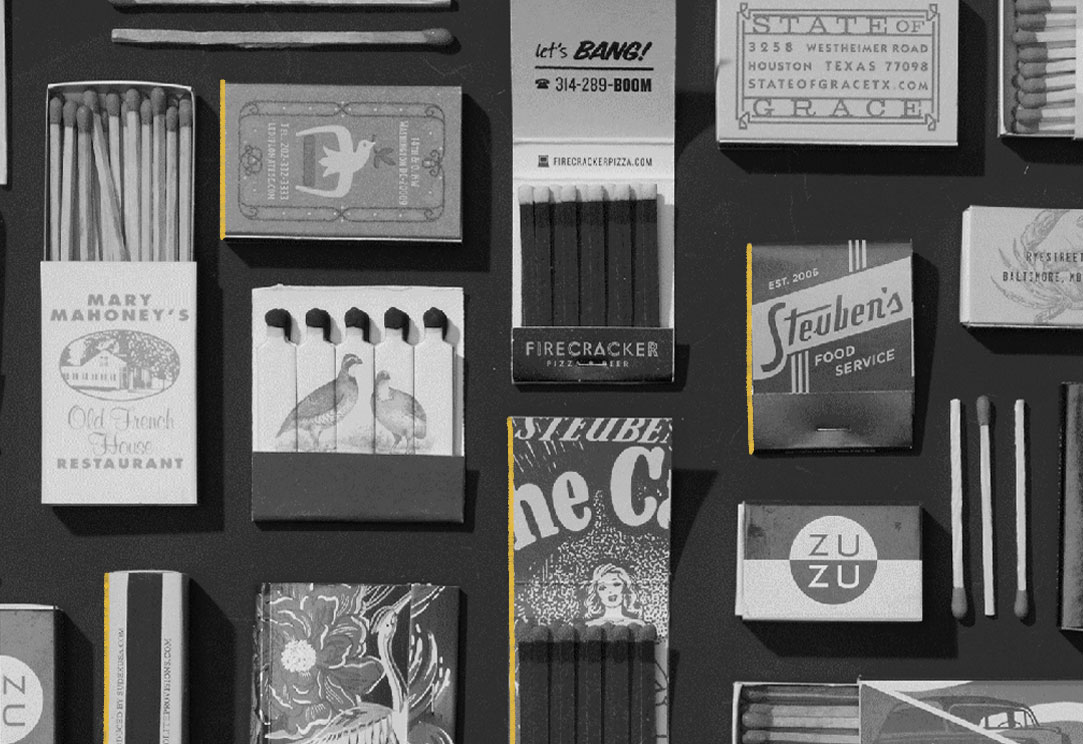Friction matches were invented by John Walker of England in 1827. Then in 1892, Philadelphia patent attorney Joshua Pusey secured a patent for cardboard matches housed in a matchbook. Around the turn of the century, the matchbook’s potential to be an advertising vehicle started to gain traction. Reportedly, a New York City opera company successfully promoted a performance via illustrated matchbook covers. Diamond match salesman Henry C. Traute heard about this and brought the concept to the Pabst Brewing Company in Milwaukee in 1902. Pabst Brewing Company became the first food and beverage company to invest in branded matches. Traute also convinced several tobacco companies and Wrigley’s (the gum company) to advertise via matchbooks. Notably, Traute also improved the safety of matchbooks by relocating the striking surface to the matchbook exterior, giving rise to the familiar warning, "Close Cover Before Striking." He also convinced businesses to give matchbooks to customers for free. The practice took off and many businesses began advertising by giving away free branded matchbooks to customers. This became especially popular at restaurants, so much so that diners began viewing matchbooks as souvenirs. The heyday of restaurant matchbooks lasted from 1920 through World War II. Major U.S. suppliers of matchbooks included D.D. Bean & Sons Co., Ohio Match Company, Diamond, Match Corporation of America, Lion, Atlas, Monarch, Federal, Universal, and Superior. In 1973, strikers were moved to the backs of matchbooks instead of the fronts to comply with new federal safety laws, but little else about the design changed over time. When smoking restrictions were put in place, matchbooks began to decline in popularity. However, some restaurants do continue to offer matchbooks as an inexpensive way to advertise to their customers. And although they have largely gone by the wayside, restaurant matchbooks are still sought after and treasured by a large community of avid collectors today.

Your go-to guide for weird history facts
Subscribe to the FREE daily email that makes learning about history fun.


